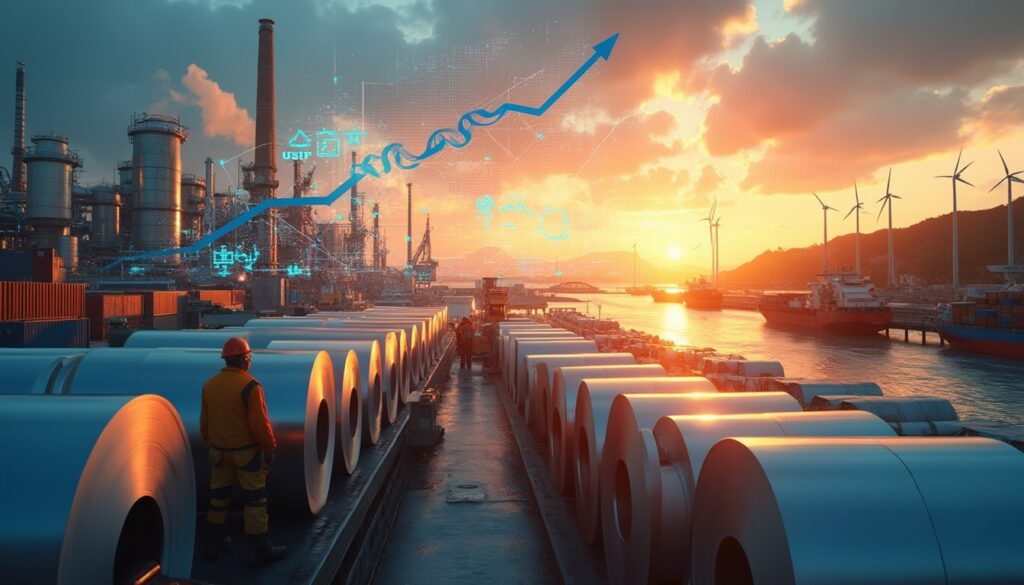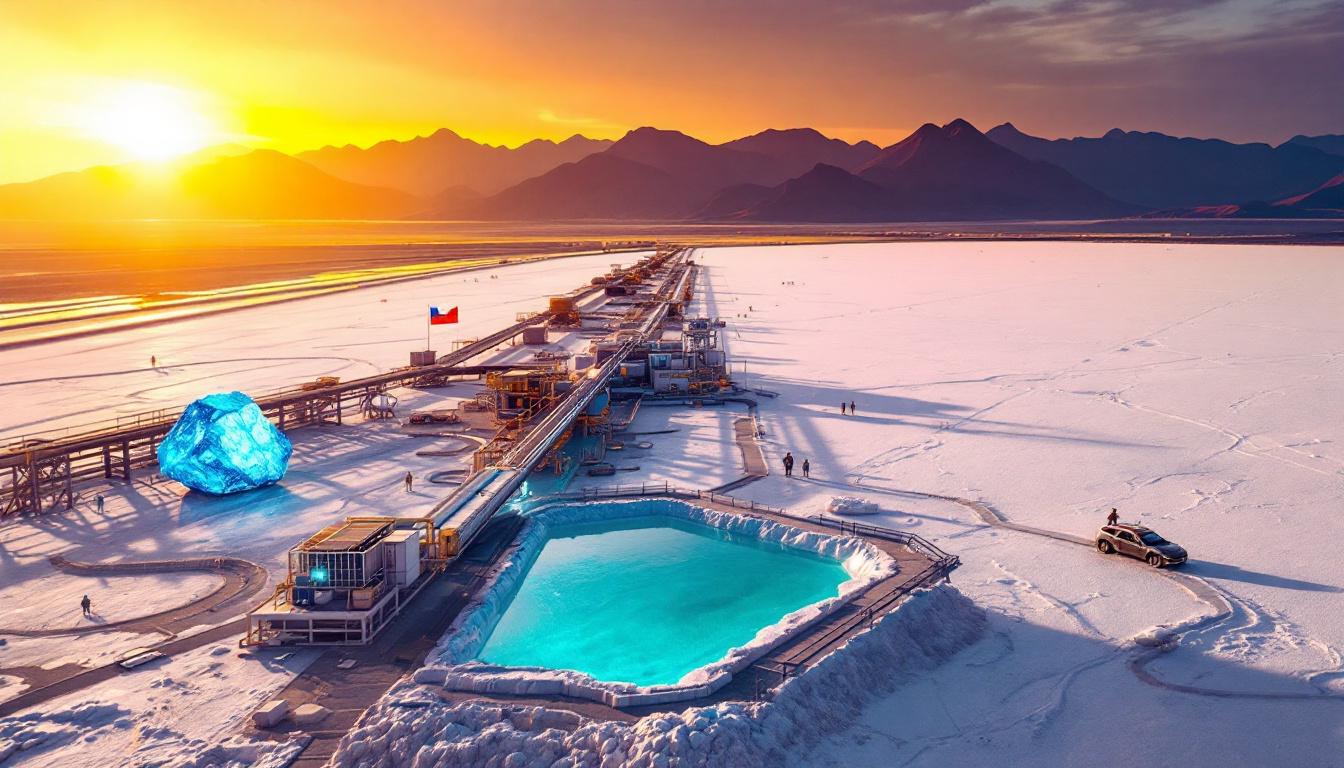Russian aluminum giant Rusal has posted an outstanding performance with its Aluminium giant Rusal profit jump 2025. The company reported a 184.8% rise in net profit to US$803 million by the end of December last year. This near three-fold increase comes amid ongoing market pressures and serves as a key indicator for industry observers. rusal profit report
The turnaround is partly due to effective cost management.
Production costs dropped by 6.8% to US$2,025 per metric ton.
Optimised energy consumption and efficient raw material sourcing, especially alumina, helped achieve this substantial reduction.
Higher aluminum prices globally boosted profitability even while revenue dipped slightly to US$12.08 billion.
This paradox of rising profits despite falling revenue underlines enhanced operational efficiency and strong sales positioning.
Industry experts have noted the unusual dynamics in this market period, offering fresh profit surge details in the sector.
What drove such dramatic profit growth?
Rusal managed this achievement by capitalising on strategic advantages.
Robust cost-cutting measures and market developments worked in tandem.
Analysts point to the company’s improved efficiency as the engine for its profit surge.
This performance is fueling conversations about global commodities market insights in the metals sector.
Mikhail Khazin, a Moscow-based metals analyst, remarked,
"The combination of reduced production costs and higher selling prices created a perfect storm for Rusal's profitability."
His words underline the importance of a multi-pronged strategy amid intense market competition.
How are geopolitical factors impacting operations?
While Rusal faces no direct sanctions, the ripple effects of Western measures are evident.
Indirect pressures and supply chain disruptions have forced the company into operational recalibration.
Market observers point to global geopolitical tensions impacting commodities markets as a significant factor influencing trade flows.
In April 2024, the London Metal Exchange banned deliveries of new Russian aluminum.
This created instability in global supply chains and contributed to price volatility.
European automakers have reconfigured their supply chains, avoiding deals involving Russian materials due to compliance concerns.
The European Union's aluminium ban, which still permits a 275,000-ton import quota, further complicates the trading landscape.
This quota accounts for about 15% of Russian aluminum exports before the crisis, highlighting the challenges in untangling geopolitical webs from commercial interests.
What shifts can be seen in market strategy?
Since 2022, Rusal's focus has shifted notably toward Asian markets.
Countries like China, India, and Turkey now feature prominently in its revenue mix.
Despite the eastward pivot, Europe continues to supply more than one-fifth of Rusal's income.
Such shifts are shaping navigating the geopolitical shift in commodity markets.
European market share is resilient despite political tensions.
Discounts of 10-15% compared to LME benchmarks have helped secure market share in Asia.
This pricing strategy, though reducing margins, underpins long-term market development and is critical for volume stabilisation.
Zhang Wei, a metals strategist at Shanghai Metals Market, noted:
"Trading margin for market access is a risk that can secure lasting relationships, vital as demand surges."
This measured concession supports a vision of the future aluminium trade landscape.
How is the green energy transition fuelling aluminum demand?
The green energy revolution continues to impact aluminium demand.
Aluminium’s lightweight and anti-corrosive properties make it indispensable for clean energy applications.
Growing demand in electric vehicle (EV) manufacturing underpins this shift.
Industry voices have highlighted mining’s pivotal role in the clean energy transition alongside developments in energy efficiency.
High-end EV models now feature up to 250 kg of aluminum, in contrast to 80-150 kg in conventional vehicles.
This use is driven by strict emissions standards and government incentives.
Enhanced battery technology and more charging points contribute further to aluminium’s rising profile.
Renewable energy infrastructure also offers promising demand prospects.
The solar panel market, for instance, saw a 56% increase in capacity in 2023.
Forecasts indicate continued growth as renewable projects gain momentum.
Furthermore, decarbonisation in mining driving sustainability has accelerated low-carbon production practices.
What are the broader industry implications?
Rusal remains one of few Russian companies trading internationally.
Its continued access to global capital markets gives it a financial cushion that many counterparts lack.
The firm’s hydropower-based production model not only cuts costs but also appeals to sustainability-conscious markets.
Looking ahead to 2025, several key factors will shape the industry:
- China's economic recovery pace, which may drive global demand.
- Potential tightening of Western policies affecting market access.
- Increasing aluminium recycling rates that could temper primary aluminium production.
- Persistently low energy costs due to Russia’s abundant hydropower.
Operational adjustments, such as developing new rail links to Asian markets and alternative shipping routes via the Northern Sea Route, illustrate the company's agility.
Despite higher costs from these changes, the underlying competitive advantages remain robust.
Investors and market strategists are watching these developments closely as they could define the future dynamics of aluminium trade.
Alexander Davidson, a metals strategist at Goldman Sachs, observes,
"The aluminium market faces unprecedented segmentation heading into 2025. Regional price disparities are likely to persist and generate complex trading environments."
Such perspectives underline the delicate balance of risk and opportunity in the sector.
FAQs About Rusal and the Aluminium Market
What is Rusal's position in the global aluminium market?
Rusal is the world's second-largest aluminium producer by volume, contributing roughly 6% to global primary aluminium output. Vertical integration and access to cost-effective hydropower remain foundational to its competitive edge.
How might sanctions against Russian aluminium affect global supply chains?
Sanctions have led to market fragmentation.
Western consumers are increasingly turning away from Russian-sourced aluminium while Asian buyers secure discounted material deals.
This shift is accentuating regional pricing differences and creating compliance challenges for international supply chains.
What role does aluminium play in the electric vehicle revolution?
Aluminium is key to EV production.
It is used in battery enclosures, structural supports, and thermal management systems.
The reduction in weight can improve EV range by 5-7%, reinforcing aluminium’s importance in the automotive industry.
How are aluminium producers meeting sustainability targets?
Producers are investing in low-carbon production methods.
Hydropower-based smelting and increased recycling capacity are crucial measures.
Rusal's low-carbon aluminium offerings are a testament to industry efforts towards sustainable development.
What long-term prospects exist for aluminium prices amid geopolitical tensions?
Price volatility is expected through 2025.
A two-tier pricing model may persist, where non-Russian certified aluminium fetches premiums in the West despite a surplus market in Asia.
The ongoing energy transition and market segmentation are forecast to drive moderate price increases.
This comprehensive analysis shows that Rusal’s remarkable profit surge, set against the backdrop of Aluminium giant Rusal profit jump 2025, is the result of a blend of cost efficiency, market strategy, and geopolitical navigation. Two critical elements—operational agility and strategic market reorientation—are reshaping the aluminium industry for years to come.
Want to Get Instant Alerts on the Next Major Mineral Discovery?
Stay ahead of the market with Discovery Alert's proprietary Discovery IQ model, delivering real-time notifications of significant ASX mineral discoveries and turning complex data into actionable investment insights. Explore how major discoveries can generate substantial returns by visiting the Discovery Alert discoveries page and begin your 30-day free trial today.




